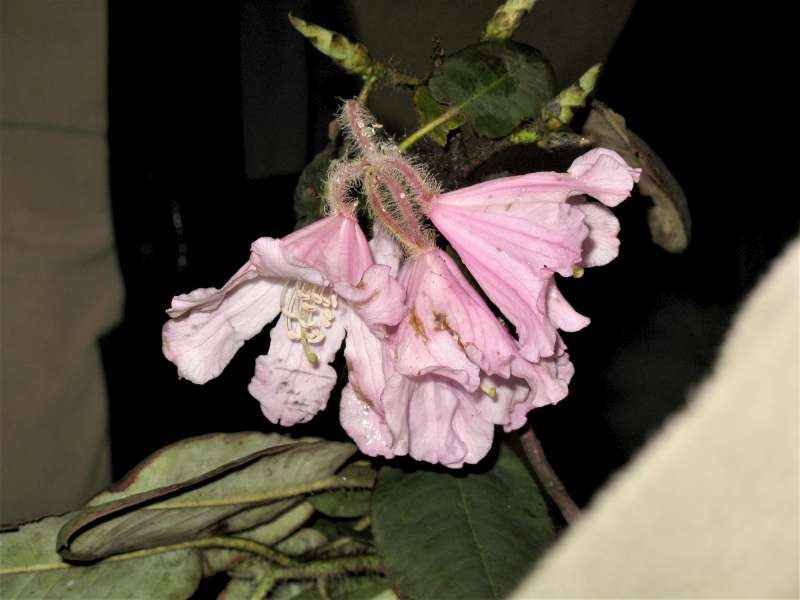Rhododendron bailiense
Beskrivelse
R. bailiense Y.P.Ma, C.Q.Zhang & D.F.Chamb (Fortunea). En nybeskrevet art fra Baili Rhododendronnature reserve, NW Guizhou, China. Beslægtet med Auriculata, som nu hører under Fortunea (D. Chamberlain).
Published in: Y. P. Ma, C. Q. Zhang & D. F. Chamb. In: Phytotaxa 195(2): 197. (2015).
A new species of Rhododendron (Ericaceae) from Baili Rhododendron nature reserve, NW Guizhou, China YongPeng MA1, David F. Chamberlain2, WeiBang SUN1* & ChangQin Zhang1*
Tegninger og artikel om R. bailiense
1 Kunming Botanical Garden, Kunming Institute of Botany, Chinese Academy of Sciences, Kunming, P.R. China
2 Royal Botanic Garden, Inverleith Row, Edinburgh EH20 3LR, UK. *Corresponding authors: wbsun@mail.kib.ac.cn; zhangchangqin@mail.kib.ac.cn
Introduction Rhododendron Linnaeus (1753: 392) is one of the largest genera in the family of Ericaceae, which is subject to much ongoing taxonomic debate. About 1,025 species are recognized; these are distributed from the northern temperate zone, throughout tropical Southeast Asia, to northeastern Australia (Chamberlain et al. 1996). In China, there are 571 species classified in 6 subgenera, of which 405 species are endemic (Fang et al. 2005). Apart from Xinjiang and Ningxia, Rhododendrons have been documented in all other provinces (Ma et al. 2014; Wu et al. 2005).
The Baili Rhododendron Nature Reserve is located in a highland region in NW Guizhou that extends over an area
of approx. 130 km2, and is characterized by the dominance of Rhododendrons. Previous field investigations regarding Rhododendrons had reported about 35 species belonging to six subgenera, six sections and seven subsections, respectively (Chen et al., 2010). However, this conclusion remains unclear, as some of newly described species were actually hybrids between sympatrically dominant species there (e.g. Rhododendron delevayi, R. irroratum and R. decorum).
In 2013, a joint project was launched via the staff from the Baili Rhododendron Nature Reserve, involving plant
taxonomists from the Royal Botanic Garden Edinburgh and Kunming Institute of Botany from Chinese Academy
of Sciences, to clarify the Rhododendrons in that area. During field work on Baili Rhododendron Nature Reserve, a Rhododendron species with distinct leaves was brought to our attention and collected for further study. After careful examination of specimens and relevant literature, its status as a distinct new species was confirmed. This species shows strong affinities with R. auriculatum and R. chihsinianum, two species that have been traditionally placed in Subsection Auriculata in Subgenus Hymenanthes. This subsection is now considered to be synonymous with Subsection Fortunea.

